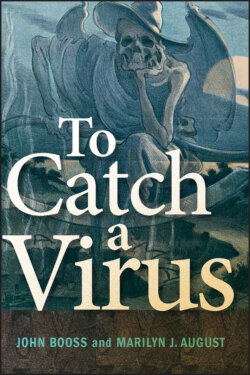Читать книгу To Catch a Virus - John Booss - Страница 9
Foreword
ОглавлениеThis book traces the growth of diagnostic virology from its beginnings over a century ago to the present: the scientific discoveries, the blind alleys, the missteps, the epidemics that gave urgency to the quest, the technological advances, and the unique individuals whose commitment and hard work were the keys to progress.
The idea for this book first arose at a memorial service for Dr. Gueh-Djen (Edith) Hsiung, a leader in clinical and diagnostic virology who died in 2006 and in whose laboratory the authors and I had all trained. To us, Edith Hsiung embodied the enthusiasm, dedication, and perseverance of an older generation who, sadly, had died or were dying and whose stories were being lost. John Booss, to his great credit, has been the driving force behind this project, traveling the country to research historical archives and interview key people. He was fortunate to enlist Marilyn August, a diagnostic expert and science writer who is a key contributor to this important endeavor. Although a diagnostic virologist myself, I knew little of the history of the field and thus have learned a tremendous amount reading the material they have unearthed and presented in this fascinating book.
When I first entered Dr. Hsiung’s laboratory in 1979, virus isolation involved inoculating litters of newborn mice or embryonated hens’ eggs, or preparing cell cultures by harvesting rabbit kidneys and chicken and guinea pig embryos—i.e., working with a virtual menagerie—as well as recovering discarded human foreskins from the obstetrics ward. Time to result was slow, and it was often said that the patient was dead or better by the time the result was received. Over the intervening years, diagnostic advances have transformed the field by allowing accurate results in a clinically useful time frame. Today, with molecular methods and rapid diagnostic tests, most results are reported within minutes to hours to 1 to 2 days. Providing sophisticated molecular tests that require minimal skill is now a reality.
With these advances have come new challenges. As tests become more sensitive, low levels of clinically irrelevant or nonviable viruses may be detected and can be misleading to clinicians. Similarly, interpreting the clinical relevance of multiple viral pathogens in the same sample is problematic. Furthermore, with numerous commercial virus detection kits now becoming available, laboratories can find it hard to decide which technologies to invest in. As diagnostic virology enters a new phase in the clinical mainstream, it is highly fitting and fortunate that this book is available to mark the first century of progress and to recount the many stories and contributions that have led us to where we are today.
Marie Louise Landry, MD
Yale University School of Medicine
